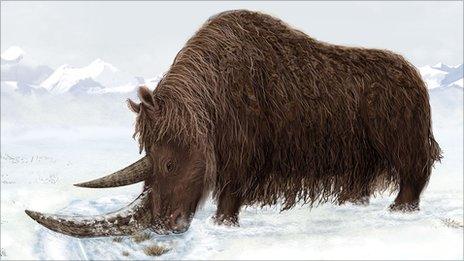Woolly rhino skull to go on display in Cambridgeshire Fens
- Published
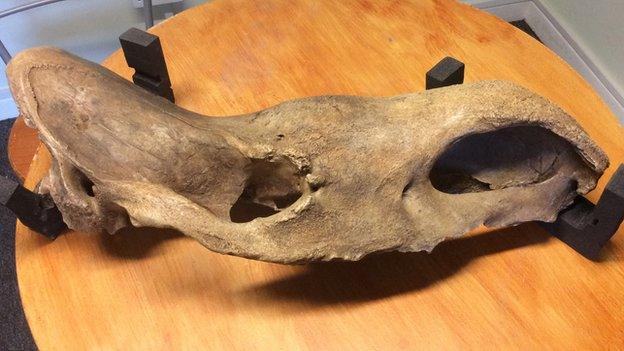
The skull is about one metre (3ft 3in) long and belonged to a young male
The skull of a woolly rhinoceros, thought to be at least 35,000 years old, is to go on display near where it was found in Cambridgeshire.
The fossil was uncovered by a digger driver on farmland, near March, in October.
Jamie Jordan, a "self-taught palaeontologist", who runs Fossils Galore in March, said it had taken "roughly 200 man-hours" to preserve it.
It will be the "star attraction" at the shop and museum from 11 April.
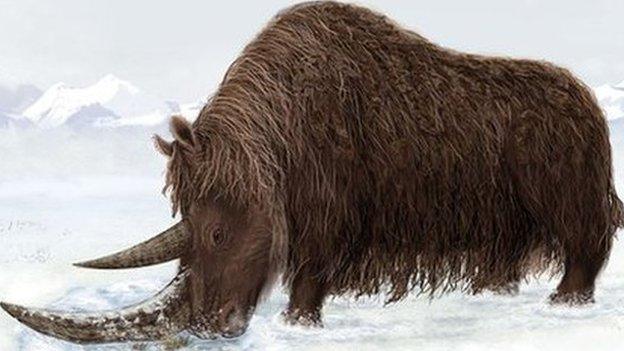
Rhinos "were a bit like giant furry lawnmowers", said Professor Adrian Lister
Palaeontologist Professor Adrian Lister, from the Natural History Museum, said: "Woolly rhinos were herbivores with low-slung heads who roamed the plains chomping on grass.
"Most similar fossils to this date from the last ice age, about 75,000 to 35,000 years ago."
Mr Jordan believes the skull may be far older than first realised.
He said: "It was found under Devensian gravel deposits, external and they date back 250,000 years."
Professor Lister said: "It's not impossible that it predates the last ice age [about 75,000 to 35,000 years ago] but it would be very remarkable and very special."
.jpg)
Its skull was fractured and Jamie Jordan believes it died fighting over a mate or territory
Mr Jordan said the skull was covered in "horrible black" clay and had to be cleaned with small dental picks and lollipop sticks.
"It has well over 500 layers of preservation fluid - a bit like PVA glue but watered down - which seeps into the bone and preserves it from the inside out," he said.
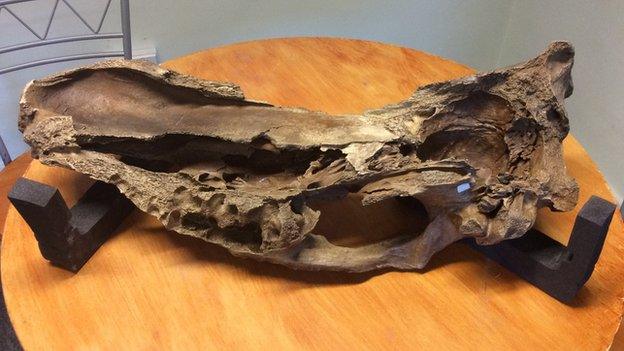
A tiny intact bone, thinner than a pencil lead, was found in the skull's ear cavity during preservation
Mr Jordan said: "We came across one extra bone, a leg bone, which showed signs of deer foot prints and cut marks.
"Man didn't really mess with a woolly rhino but we think it was scavenged after it died."
- Published4 February 2015
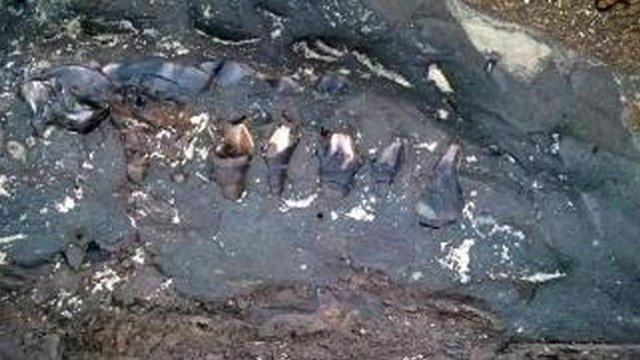
- Published4 January 2014
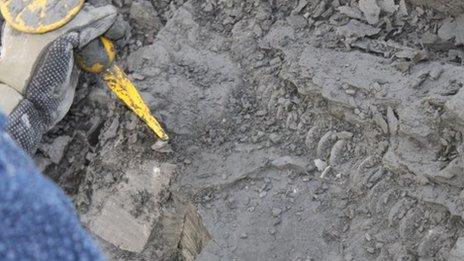
- Published29 October 2014
